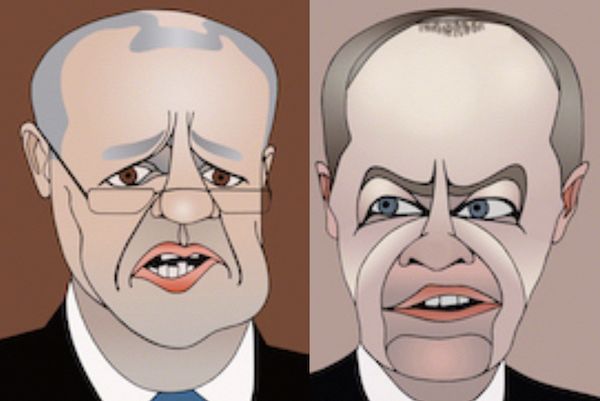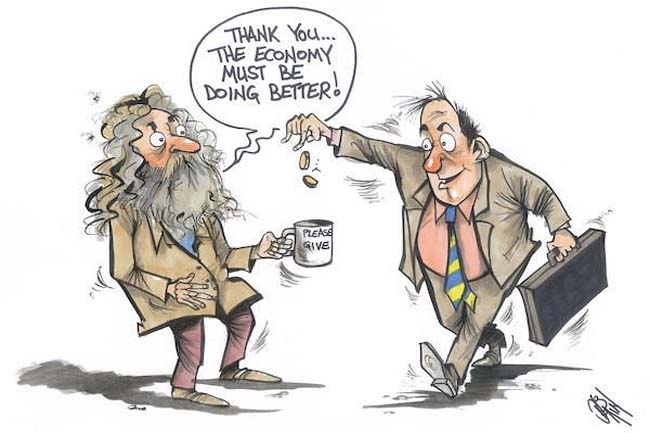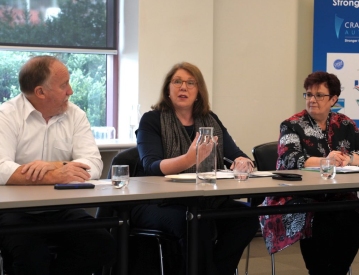On May 18, the fate of Australia’s democracy will be decided for another three years. It was to be hoped that those looking for our votes would have engaged with the major issues of the moment, offering us policy options reflecting our values and with a solid basis in evidence.
From an economist’s point of view, and in no particular order, here are ten things I would have liked to see them discuss.
1. Household debt
Australian households are carrying debts to the tune of 190% of their disposable incomes and about 125% of the country’s gross domestic product. This is the result of many years of insufficient support for the economy from the government budget, compensated for by financial deregulation, easy credit for households, and a reliance on an increasingly inflated and consequently fragile property market.
There is an underutilisation, and especially a youth underutilisation, crisis in this country, which goes unreported and is consequently largely ignored
2. Household saving
Households are saving about 2.5% of their disposable incomes, down from above 10% in the period after the global financial crisis (GFC) hit the economy, and almost as low as it was during the later credit binge years of the Howard Government. Compulsory super has done nothing at all to boost our saving.
3. Property prices
Property prices are falling in Sydney, Melbourne and Perth, and have much further to go. The 30% or so of people in mortgage distress are especially vulnerable should they fall into negative equity on their homes, especially if an economic downturn causes them to lose their jobs.
4. The continuing failure of monetary policy
The Reserve Bank of Australia has for many years had the responsibility of setting interest rates to hold the rate of consumer price inflation in the range of 2-3% per year. They have failed to hit this target range for almost the whole of the last four years, despite reducing the cash rate to a historic low of 1.5% in August 2016 and leaving it there.
With quarterly inflation of 0% in the most recent quarter, many of the same economists who have been predicting rising inflation and rising interest rates for years have now started talking about a further cut in the cash rate, and even of Japanese-style quantitative easing. Zero inflation is not a good sign — it is a signal of economic weakness, despite continuing high export prices and booming commodity exports.
5. Unemployment and underemployment
The official unemployment rate of 5% may not seem that high, but in modern Australia, it is no longer a useful measure of the impact of unemployment on Australia workers. The underutilisation rate of 13.2% is a more realistic figure, as it includes people who have some (often precarious) work, but who are looking for more hours. Worse still, the underutilisation rate for 15-24 year-olds is nearly 30%, and for 15-19 year-olds almost 40%. There is an underutilisation, and especially a youth underutilisation, crisis in this country, which goes unreported and is consequently largely ignored. What a waste.
6. Inequality and poverty
According to the Standardized World Income Inequality Database (SWIID), income inequality has been increasing almost continuously in Australia since the mid-1970s, which not entirely incidentally is the last time there was genuinely full employment in this country. Australia remains far less unequal than the USA today, but we have more inequality in our distribution than the USA did in the 1970s. The days when Australia could be described as having a Scandinavian-style distribution of income are 40 years in the past. This country may still be lucky in many ways, but it is no longer the country of the "fair go" — if you are on the bottom of the pile.
7. Newstart payments
The conditional Newstart allowance sits at about $40 a day. It is not an unconditional welfare payment, remember. You might be on a work-for-the-dole project and you will be on a job plan, requiring you to keep applying for jobs. You won’t have enough money to escape poverty. Newstart is a poverty-level payment, and indeed two-thirds of the unemployed and underemployed live in relative poverty.
8. Climate change
The policy of the Australian Government relating to climate change is, essentially, not to have a policy. They don’t take seriously the huge costs of coping with and mitigating the effects of climate change later if we continue to fail to act today. The ALP, on the other hand, appears to be on the side of science and taking serious action, but then does the bare minimum to be consistent with this impression. The debate, in so far as it exists at all, is between those who would do next to nothing and those who would do the least they can do to pacify their supporters. There is no grand vision of a clean, green economic future from either party.
9. The budget surplus fetish
A government budget deficit is a non-government surplus. The government’s debt is just the net supply of Australian dollars to the rest of us. The government cannot run out of dollars. The role of taxation is to limit total spending in the economy to help control inflation, while influencing the distribution of income and discouraging harmful activities, like CO2 emissions. The limit on government spending is set not by government solvency, but by inflation.
Everyone in Australia, in 2019, should have heard that to repair household balance sheets and to build an equitable and sustainable economy, politicians should stop using the misleading ‘government as household’ metaphor, start explaining the difference between a currency issuer and currency users, and take responsibility for providing excellent public goods and maintaining the economy at full employment.
10. Federal job guarantee
We need to stabilise the economy, manage inflation, eliminate most of the poverty which currently exists, build and maintain healthy local communities, set the appropriate government deficit. To do this and improve the well-being of the unemployed, the underemployed, the insecurely employed and their families, we should commit to the permanent elimination of involuntary unemployment. We should restore Australia to full employment, combining economic justice with environmental justice. Our politicians should at least be discussing this policy proposal, which has been available to them now for at least 20 years.
Your list might differ from mine, but perhaps you have the same impression of the campaign. Mr Morrison, Mr Shorten and their colleagues are failing to address many of the things which really matter for the future of Australia. They are obsessed with political point scoring, avoiding tactical mistakes, and seizing on any mistakes their rivals make. They are failing us.
You can follow Dr Steven Hail on Twitter @StevenHailAus, as well as on Facebook at Green Modern Monetary Theory and Practice. His new book, 'Economics for Sustainable Prosperity', is due to be released by Palgrave Macmillan in July.xxx
 This work is licensed under a Creative Commons Attribution-NonCommercial-NoDerivs 3.0 Australia License
This work is licensed under a Creative Commons Attribution-NonCommercial-NoDerivs 3.0 Australia License
Support independent journalism Subscribe to IA.












